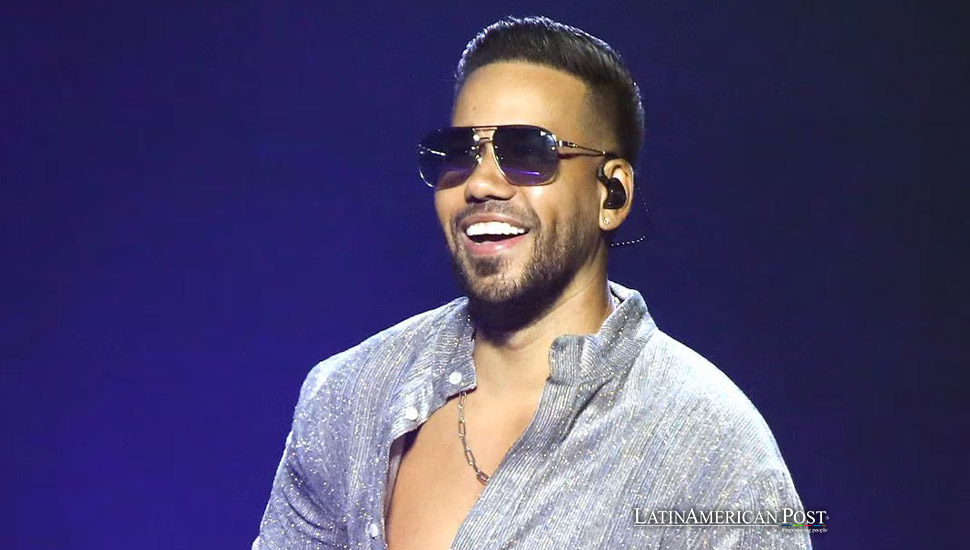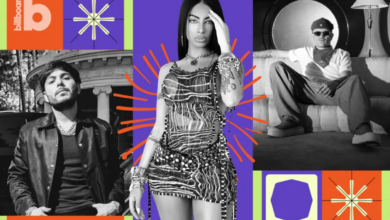The Top-Grossing Latin Artists Ever

Billboard Boxscore states Latin music has exploded onto the global touring stage. This feature highlights the highest-grossing Latin artists of all time, showcasing how they’ve dominated venues worldwide and transcended the genre’s traditional boundaries.
From Local Legends to Global Icons
Latin music’s journey from regional success to global domination is extraordinary. According to Billboard Boxscore, Latin artists have broken barriers and records over the past few decades, becoming some of the world’s most successful touring acts. Boxscore has tracked touring data since the mid-1980s and has traditionally seen classic rock, pop, and country stars topping the charts. However, the explosion of Latin artists on the global music scene has dramatically shifted the landscape.
The top-grossing Latin artists range from reggaeton kings like Daddy Yankee to bachata crooners like Romeo Santos to global pop icons like Shakira. These musicians have managed to pack stadiums and arenas in Latin America and worldwide, reflecting a growing appetite for Latin rhythms and sounds. Their music isn’t confined to one genre—Latin music encapsulates a fusion of cultures, ranging from reggaeton, bachata, and salsa to Latin pop and regional Mexican music.
Shakira, whose career gross is $633.1 million across 701 shows, remains one of the most iconic figures. Her shows, such as the one held at Auditorio Nacional in Mexico City in 2004, grossed an astounding $19.3 million over 30 nights. Artists like her and others on Billboard’s list represent a new era for Latin music, where they command the attention of millions across continents, transcending language barriers with their rhythm-driven performances.
Bad Bunny: Redefining Success for Latin Artists
No Latin artist has recently captured the global stage like Bad Bunny. The Puerto Rican superstar has redefined what it means to be a Latin artist, having topped Billboard’s 2022 Top Tours ranking. Bad Bunny’s ascension marked the first time an artist primarily performing in Spanish ruled the Boxscore report—an enormous achievement for him and the entire Latin music industry.
Bad Bunny’s El Último Tour del Mundo and World’s Hottest Tour performances grossed over $400.9 million across 128 shows, bringing in an astounding 3 million attendees. His record-breaking performances at SoFi Stadium in Inglewood, California, 2022 grossed $31.1 million in just two nights, showcasing his global star power and proving that Latin music is thriving and dominating the international music scene.
Unlike artists who primarily cater to English-speaking audiences, Bad Bunny has made it clear that his music is for everyone—and that he wouldn’t compromise his language or roots for broader appeal. His unapologetically Latin music, which mixes reggaeton with trap, hip-hop, and even rock, speaks to a generation of bilingual and multicultural fans. His success has paved the way for other Latin artists to chart their paths without needing to enter English-language markets to find success.
The impact of Bad Bunny’s success is profound. He’s inspired a new wave of Latin musicians to embrace their identity and push boundaries. His massive financial success also demonstrates that the global audience is more diverse than ever and hungry for authentic cultural representation.
Latin Music’s Expanding Influence on Global Markets
The increasing dominance of Latin artists in the global touring market signals a broader shift in the music industry. According to Billboard, Latin music isn’t a singular genre but a vast collection of styles that reflect the cultural intersections of Latin America, Spain, Portugal, and Latino communities in the U.S. and Canada. This global appeal is why we see artists from different Latin genres charting new territory in international markets.
Shakira’s pop dominance, Daddy Yankee’s reggaeton explosion, and Romeo Santos’ bachata ballads are just a few examples of the diverse musical styles that make up the Latin music world. These artists have expanded their fan bases far beyond the borders of Latin America, breaking into Europe, Asia, and even Africa. For instance, Daddy Yankee, with a career gross of $224.7 million and attendance reaching 2.4 million, has sold out concerts in places as far-reaching as Sydney, Australia, and Tel Aviv, Israel.
The success of crossover collaborations further evidences Latin music’s growth into new markets. These partnerships, often between Latin artists and mainstream English-speaking stars, have opened even more doors. J Balvin, Maluma, and Karol G have all successfully collaborated with artists like Beyoncé, Drake, and Nicki Minaj, propelling Latin music even further into the global mainstream.
Meanwhile, the rise of streaming platforms has made Latin music more accessible than ever. Fans across the globe can now easily access reggaeton, salsa, or bachata tracks on demand, making it easier for Latin artists to break into foreign markets. This global reach is reflected in the touring success of many artists, as they continue to sell out venues in cities where Latin music once had a limited presence.
Touring Titans: The Generational Impact of Latin Music
Touring is where Latin artists have genuinely flexed their muscles, and Billboard Boxscore’s data clearly shows that these artists aren’t just selling records—they’re packing arenas. The most successful Latin acts in history have performed across hundreds of shows, with gross revenue that rivals the most significant global pop, rock, and country stars.
Consider Marc Anthony, who has grossed $299.8 million across 203 reported shows, attracting over 3 million attendees. His concerts at the Coliseo de Puerto Rico in San Juan have set records, demonstrating his enduring appeal and the generational love for salsa music. Similarly, with a career gross of $720 million and 4.1 million attendees across 219 shows, Luis Miguel continues to be one of Latin music’s most iconic performers. His concerts, especially in Mexico City, remain among Latin music history’s highest-grossing performances.
Romeo Santos, who single-handedly popularized bachata globally, has also left an indelible mark on Latin music. His $208.2 million in gross revenue across 133 shows speaks to his massive influence in bringing a traditionally Dominican genre into the mainstream. His fans span multiple generations, as his concerts draw not only those who grew up with bachata but also younger audiences introduced to the genre through his innovative fusion of pop and hip-hop.
These artists, along with others like Juan Gabriel, Vicente Fernández, and Mana, have built multi-decade careers on the strength of their live performances. Their ability to connect with audiences across cultures and generations speaks to the universality of music and how Latin music, in particular, resonates with fans from all walks of life.
As Billboard Boxscore continues to track the success of the highest-grossing Latin artists, it’s clear that Latin music’s influence on the global stage is undeniable. From Bad Bunny’s historic tours to the long-standing reign of icons like Shakira and Marc Anthony, Latin music has broken barriers and captivated audiences worldwide. The evolution of Latin music, both in terms of genre and global reach, signals a bright future for artists who embrace their cultural roots while pushing the boundaries of what Latin music can be.
Also read: Shakira’s Empowering New Song ‘Soltera’ Celebrates Female Independence
As we look to the future, it’s evident that Latin artists will continue to dominate not only streaming charts but also the world’s biggest venues. With new generations of artists rising and veterans like Daddy Yankee and Luis Miguel still at the top of their game, the global appetite for Latin music is stronger than ever. These touring titans have proven that Latin music is not just a genre—it’s a cultural movement that transcends borders, bringing together people from all walks of life under the universal language of rhythm and emotion.





